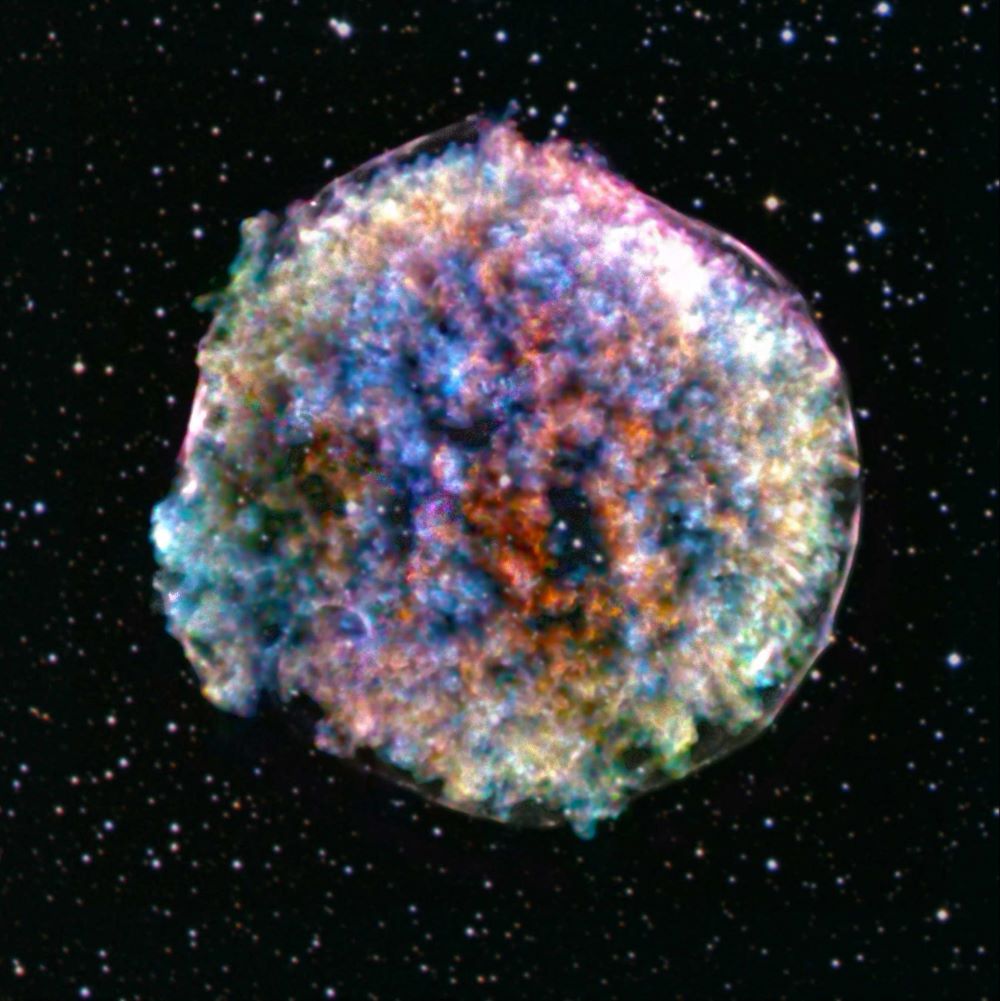A recent study examines how the Earth was hit by blasts from supernovae (plural form of supernova (SN) ) that occurred 3 million years ago (Mya) and 7 Mya with the goal of ascertaining the distances of where these blasts originated. Using the live (not decaying) radioactive isotope 60-Fe, which is produced from supernovae, a team of researchers at the University of Illinois was able to determine the approximate astronomical distances to the blasts, which they refer to as Pliocene Supernova (SN Plio, 3 Mya) and the Miocene Supernova (SN Mio, 7 Mya). “Supernovae are dramatic examples of the fact that stars have life cycles,” Dr.
Brian Fields , who is a Professor of Astronomy at the University of Illinois and a co-author on the study, tells Universe Today . “Supernova explosions mark the spectacular deaths of the most massive stars, those at least eight times the mass of the Sun. They play a central role in astrophysics and cosmology for many reasons.
” For the study, the researchers conducted laboratory analyses of the live (non-decayed) radioactive iron isotope species of 60-Fe based on several previous studies where 60-Fe samples were obtained from the Earth’s crust, deep-sea sediments, and lunar regolith. While the ages of these samples were obtained using the 60-Fe half-life of 2. 62 million years and determined to have originated from two supernovae blasts, the goal of this recent study was to determine the distances to the two blasts.
The study’s findings indicate that SN Plio originated between 20 to 140 parsecs (pc), or 65 to 457 light-years (ly), from Earth, but the most likely range is between 50 to 65 pc, or 163 to 212 ly. For SN Mio, the team determined the approximate distance is 110 pc, or 359 ly. For context, 1 pc is equivalent to 3.
26 ly. While these might be considered relatively “safe” distances from Earth, how can such blasts potentially influence the evolution of our solar system? “If a supernova blows up too close to the Earth or another Earth-like planet, the consequences can be devastating for life,” Dr. Fields tells Universe Today .
“The supernova outburst creates high-energy radiation–gamma rays–that will irradiate Earth’s atmosphere for months after the explosion. Our atmosphere will shield us from direct exposure by these gamma rays, but at great cost: the ozone layer in the upper atmosphere will be significantly reduced. This will leave Earth vulnerable to harsh ultraviolet (UV) rays from the Sun, which can be harmful for much of life on Earth.
The Earth will take several years to re-generate ozone. ” Supernovae are some of the most awe-inspiring spectacles observed in the cosmos, with the oldest recorded supernova , now named RCW 86 or SN 185 , occurring on December 7, 185 A. D.
, and documented by Chinese astronomers. They referred to this event as a “guest star” and noted its light stayed in the sky until June 186 A. D before it disappeared.
Present-day astronomers refer to this event as a transient astronomical event and suggest that RCW 86, which resides approximately 2,800 parsecs (pc) (9,100 light-years (ly)) from Earth with an estimated diameter of 85 ly, was likely a Type Ia supernova . Dr. Fields tells Universe Today, “Supernova explosions are rare—each century, there is about one to three such events in our entire Milky Way galaxy.
So, most of them explode far away, and are harmless for Earthlings. But over timescales of many millions of years, it is very likely that one would explode near the Earth, even too close for comfort. ” Dr.
Fields notes while the mass extinction that occurred at the end of the Devonian Period approximately 360 million years ago have been the result of one or more supernovae, he tells Universe Today there are currently “no threatening supernova candidates”, as in “none so near that we are in their kill zones. ” . One of the most well-known (future) supernovae is the star Betelgeuse , which is a red supergiant located approximately 550 ly from Earth and is the second brightest star in the Orion constellation.
Betelgeuse made headlines in late 2019 when astronomers observed the star dimming, with some suggesting it was about to go supernova. However, follow-up observations suggested in August 2020 that the dimming was due to a dust cloud that formed from superhot material ejected by the massive star, which was later confirmed in an August 2022 study . While Betelgeuse is known for its brightness variances due changes in its temperature and size, some might still ask when it’s going to explode? Dr.
Fields tells Universe Today, “It is unknown when [Betelgeuse] will explode, because as far as we know, the late phases of a massive star’s life do not cause noticeable changes in the surface region of the star. Thus, Betelgeuse could be the next supernova in our Galaxy, but it could also explode 100,000 years from now. But its eventual death is certain, so enjoy it in Orion now while you still can!” What new discoveries will astronomers make about supernovae in the coming years and decades? Only time will tell, and this is why we science! As always, keep doing science & keep looking up!.
From: universetoday
URL: https://www.universetoday.com/163458/supernovae-struck-the-earth-3-million-and-7-million-years-ago/



